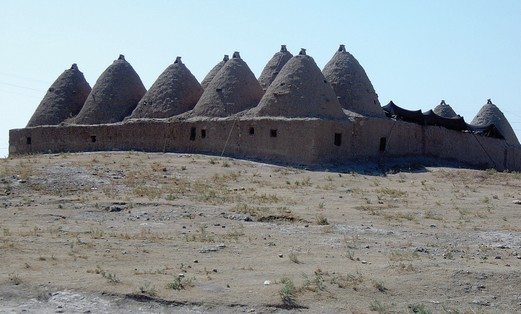Bu konu aylardır ortalıkta… Ignatius’un Washington Times’ının bu kritik dönemde attığı başlık çok ilginç… Tam bir kaç gün sonraya denk geliyor. Makale ile başlık birbirine uymuyor sanki. Zorlama var. Ateist Yahudilerle Marksist Kürtler arasındaki genetik bağ safsatasını eklemeyi unutmuş… Ya da Kral Süleymanın 400-500 adamının Avrupadan kaçırıp getirdiği Avrupalı bakire kızlara zorla sahip çıkmaları sonucu bu zorla elde etmeden üreyen çocuklara “Kurd” denildiği gibi folklorik detayları da unutmuş…*
Haluk Demirbag
—
Julia Duin
Thursday, February 5, 2009
Much has been written over the ages as to what happened to the Ten Lost Tribes of Israel.
The answer is simple, says Ariel Sabar, author of the recent book “My Father’s Paradise: A Son’s Search for His Jewish Past in Kurdish Iraq.”
“The Bible tells you where they were deposited,” he says. “If you map those places, they are basically Kurdistan.”
The exiles merged with the local culture, took on Kurdish dress and customs while retaining their Aramaic language, the lingua franca of the known world. Beginning in 722 B.C., Aramaic was the English of its day and the language spoken by Jesus Christ. The Assyrians, then the Babylonians, then the Persians embraced it as their official language.
Despite the Islamic conquest in the seventh century, the Jews and the Christians of Iraq retained Aramaic. By the time the 20th century rolled around, 25,000 Jews still lived in the mountainous regions overlapping Turkey, Iraq, Iran and Syria. Many more lived in Baghdad, near ancient Babylon.
Today, only eight Jews remain in Iraq. In 1951 alone, 120,000 left.
What caused this exodus? The Muslim world, furious at the founding of Israel in 1948, turned on its Jews. Mr. Sabar writes through the eyes of his father, Yona Sabar, who was born in 1938 in Zakho, a city on the Harbur River, a few miles from Turkey and Syria.
At the time, “Jews lived peaceably among Muslims and Christians,” his son told me. “It was a place that when people did try to stir hatred between religions, the Kurds would not stand for it.”
I was in Zakho in 2004, so I remembered the extremely dry, mountainous terrain of the area, the blazing summer temperatures and the five-mile-long line of truckers waiting days to get through the Turkish border crossing.
Yona Sabar was ripped from this life at the age of 13, when his family fled to Israel. He became a linguist skilled in teaching Aramaic, ending up as a professor at the University of Southern California. His facility aroused the attention of movie producers, who have asked him to dub in Aramaic everything from Jesus’ words “Lazarus come forth!” to the voice of the Almighty in the movie “Oh, God!”
His son, now 37, was disinterested in his father’s unusual career until 2002, when he realized that most Aramaic-speaking Jews, now in their 70s and 80s, were dying off.
If their story were to be told, it had to be now. He went to Zakho in 2005 and 2006, meeting people his father knew and trying to find a long-lost aunt who was kidnapped by Bedouins back in the 1930s.
I called the author, happy to find someone who was as entranced with that mysterious area of the world as I was.
“I show up at book talks, and someone in the audience, about my age, says, ‘My father was an Iraqi Jew, or my father was a Kurdish Jew, and I had no idea we had this rich heritage,’ ” Mr. Sabar says. “It’s cool to see people gain access to a culture they’ve cut themselves off from or there hasn’t been a whole lot written about.”
He didn’t want his biography “to be just a Jewish book,” he adds. “I thought parts of it would appeal to evangelical Christians and people who care about the Middle East and the Kurds. Many Muslim Kurds have e-mailed me to say, ‘Thank you for appreciating our culture. No one in America understands us.’ ”
• Contact Julia Duin at jduin@washingtontimes.com.
– Julia Duin is the Times’ religion editor. She has a master’s degree in religion from Trinity School for Ministry (an Episcopal seminary) and has covered the beat for three decades. Before coming to The Washington Times, she worked for five newspapers, including a stint as a religion writer for the Houston Chronicle and a year as city editor at the Daily Times in Farmington, N.M. She has published four books. The latest, “Quitting Church: Why the Faithful Are Fleeing and What to Do about it,” was released Sept. 1. She has won many regional and national awards for her writing and has been nominated twice by the Times for a Pulitzer. She has covered events ranging from the election of Pope Benedict XVI in Rome and sex-selective abortions in India to the huge popularity of Christian colleges in the United States and a “new sanctuary” movement in mainline Protestant churches involving aid to illegal immigrants. She has learned seven foreign languages to aid in researching her stories.
Source: washingtontimes.com, February 5, 2009
*
“Another legend in Middle Eastern Folklore … relates how King Solomon reigned over a supernatural world of demons and Djinns. He sent 500 of his most faithful subjects to Europe to abduct the 500 most beautiful young women they could find. On their return they found that the king had died, and so they kept the women for themselves; The product of this forced union was the Kurds. A similar account is to be found in Jewish Folklore in which, the Kurds are said to be the descendants of devils who raped 400 virgins.”
Source: “No Friends But The Mountains: The Tragic History Of The Kurds”, by John Bulloch & Harvey Morris, 1992 [Viking]
